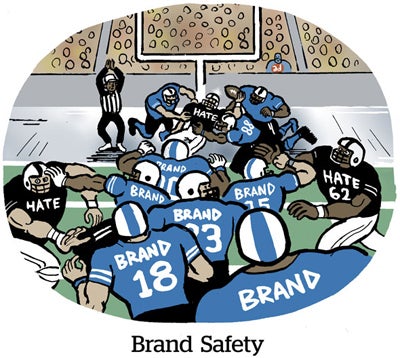Here’s today’s AdExchanger.com news round-up… Want it by email? Sign up here.
Better Safe Than Sorry
Brands are nervous about misinformation, especially as generative AI tools make it relatively easy to create convincing fake images, audio files and videos.
General Mills is teaming up with verification company Zefr to measure misinformation around its social media accounts, including on TikTok, Facebook and YouTube, Ad Age reports. Social media trolls have targeted brands such as Wayfair and Oatly with outlandish conspiracy theories by resharing false posts without verification. A brand’s reputation can take a real hit before the company is even aware of what’s happening, and correcting those misapprehensions is, of course, a more difficult task.
Wayfair found itself at the center of a human trafficking conspiracy theory that took off on social media, and Oatly made fact-checking the centerpiece of its new creative strategy following viral misinformation about its ingredients.
General Mills essentially wants to raise a brand-safety flag for fake images and avoid appearing in social media feeds with misinformation, just like an account or site might be filtered for being adjacent to hot-button content.
Testing … Testing …
Ben Kruger, a former Google account rep who worked primarily with DTC companies, recently left the big G to buy and operate a DTC business. He’s eating his own dog food – except, not dog food, because his biz manufactures microphones in China and sells them to livestreamers and creators.
One of the important things to remember, Kruger writes in a newsletter post, is it takes longer than many marketers think to convert a sale. Data from the post-purchase survey tool KnoCommerce shows almost half of customers knew about the product at least a month before making a purchase.
When marketers use seven-day conversion windows or ROAS tracking, for instance, they’re fundamentally changing how the ad system targets on their behalf. The platform (ahem … Google) doesn’t simply target the same prospecting pool with a tighter deadline. The platform optimizes toward the kind of customers who convert in a few days and sit at the very bottom of the funnel.
The seven-day window isn’t just an attribution blind spot. The ad system stops trying to reach new customers further up the funnel, and the prospecting pool will run dry.
Going Global
From November through March, TikTok signed up fewer than 100 US sellers for its Shops service.
That’s shockingly low by social platform scale standards, which treat millions or tens of millions of people like a petri dish.
But it’s not just Chinese-owned TikTok. Walmart, born and bred in the US of A, flipped last year to a majority of new products coming from overseas brands. China, home to 49.2% of new Walmart sellers in 2022, narrowly edged the US, which contributed 46.7% (Indian, Canadian and British businesses make up the other fractions), according to Marketplace Pulse data.
The reason is simple: Foreign sellers flock to Walmart’s third-party seller marketplace. They aren’t carried in brick-and-mortar stores but are plugging into Walmart’s distribution to reach US consumers.
It’s an interesting balancing act for Walmart, which must deal with fulfillment, customer service, returns and even outright scams as it opens up to third-party sellers. TikTok could turn the spigot on its US Shops product by allowing foreign sellers, too. That TikTok chooses not to is an indicator of how dicey those sales can be.
But Wait, There’s More!
More companies are paying people to watch ads. Can the model work? [The Drum]
TikTok continues its rise as an influencer platform, tightening its hold on Gen Z consumers. [Insider]
Google and Meta reduced performance reviews to save time, but have stumbled with new employee reviews. [The Information]
How newsletter publishers are diversifying beyond inbox-based revenue. [Digiday]
Peloton shares slump based on diminished site traffic, according to vendor trackers. [Bloomberg]
You’re Hired!
AdRoll promotes CMO Vibhor Kapoor to chief executive. [release]
Hearst Magazines appoints Rachael Savage to the newly created position of SVP of advertising revenue operations. [MediaPost]












